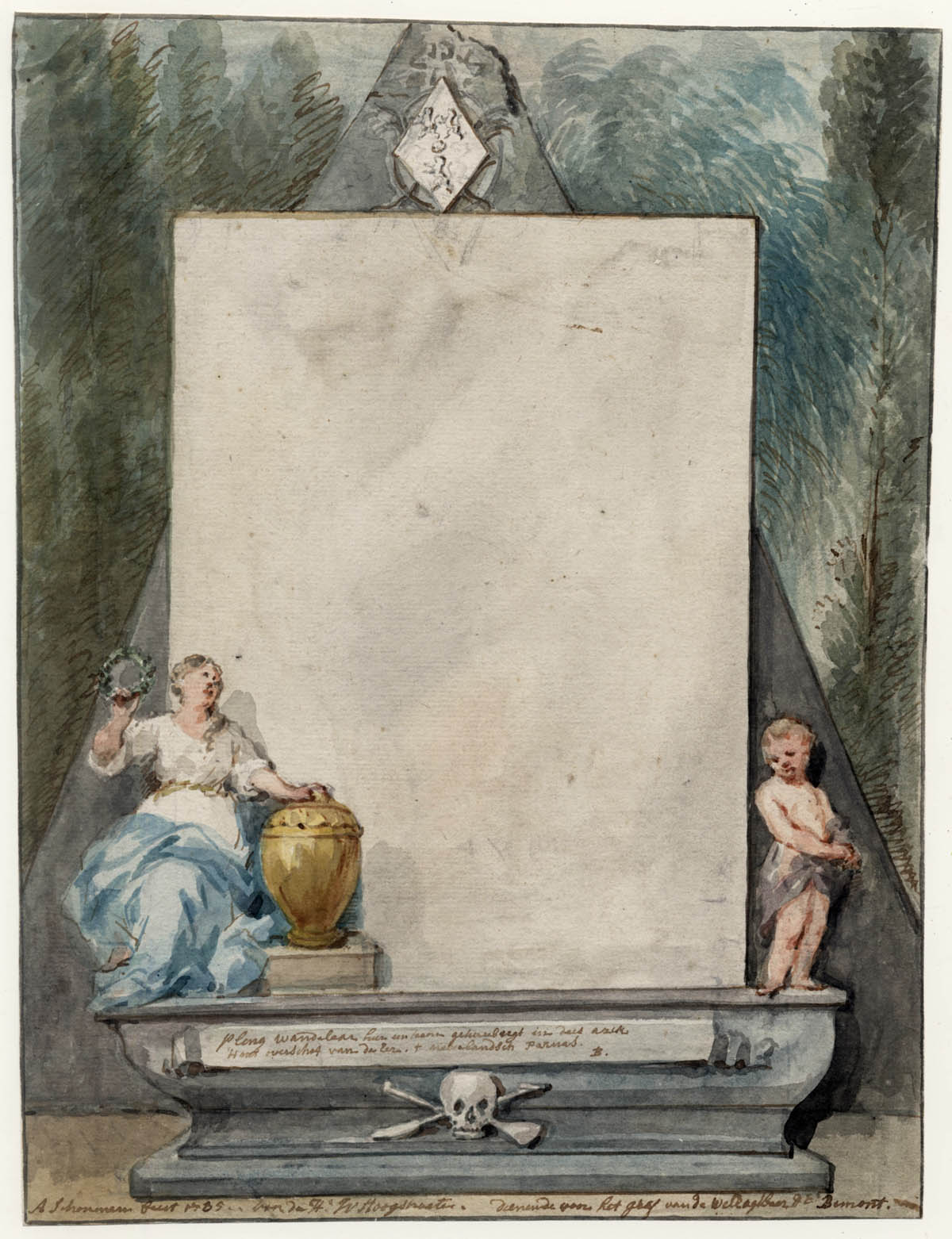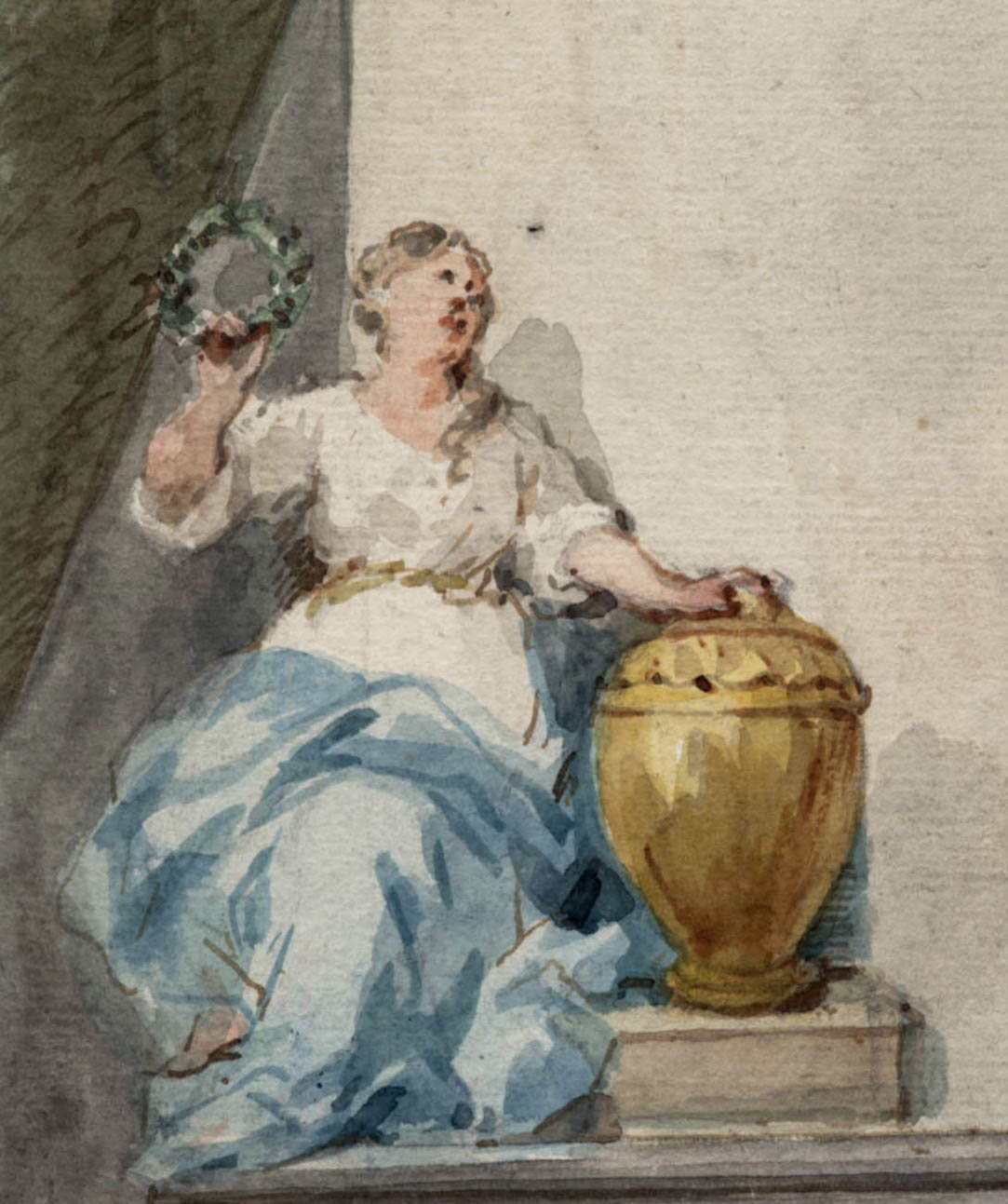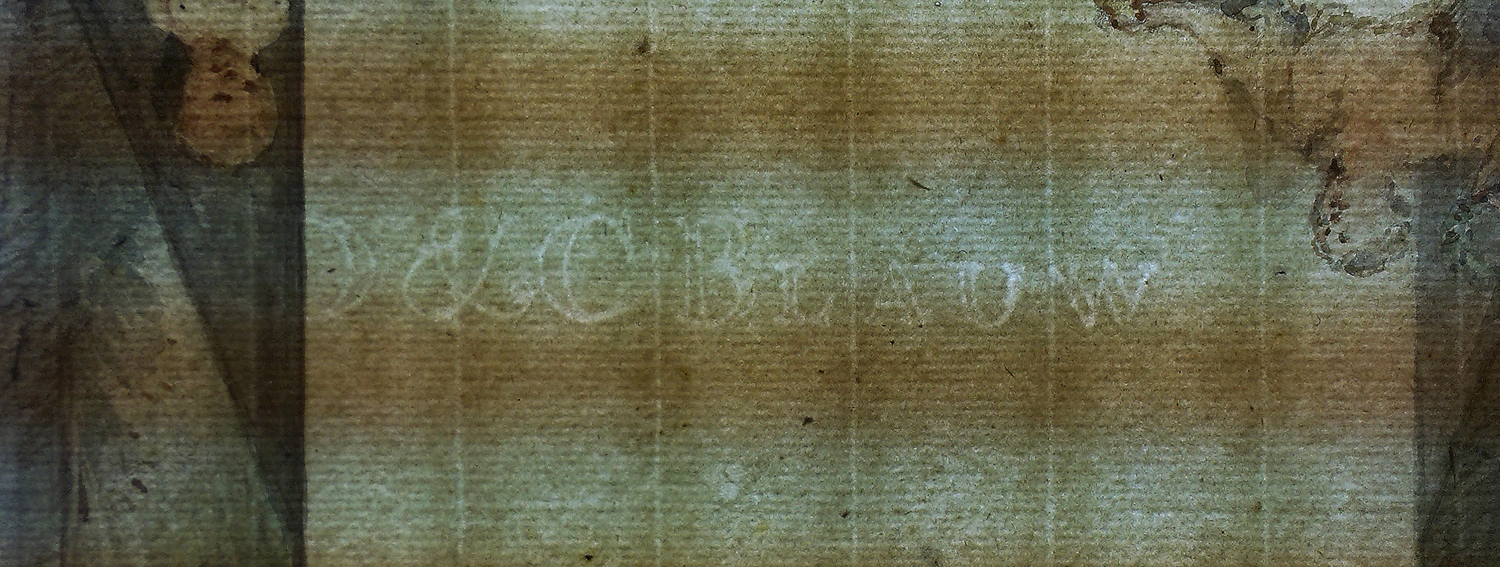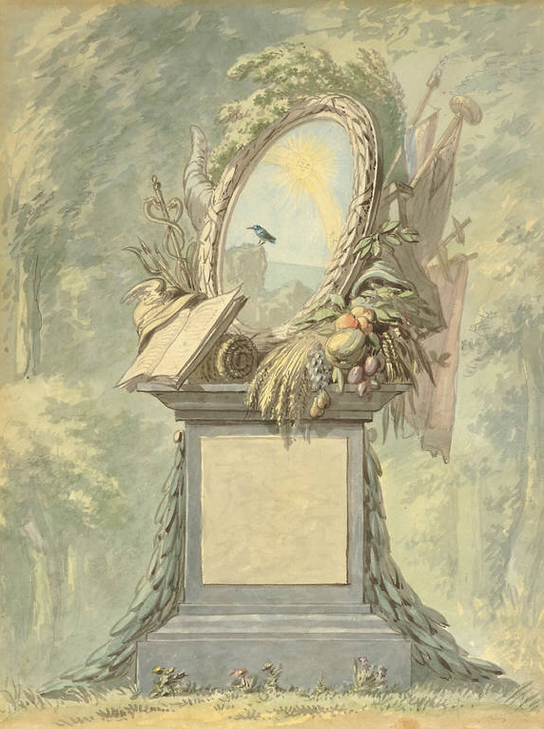AERT SCHOUMAN (Dordrecht 1710 – 1792 The Hague)
Aert Schouman (Dordrecht 1710 – 1792 The Hague)
Design for a Funerary Monument for Emanuel Bemont
Black chalk, pen and brown ink, watercolour, grey ink framing lines, watermark D&C Blauw, 297 x 219 mm (11.7 x 8.6 inch)
Signed, dated and inscribed: ‘A Schouman fecit 1785. voor den Hr. Jv Hoogstraeten. diendende voor het graf van de wele agtbaar D Ev Bemont’ (pen and brown ink, along the lower edge) and ‘Pleng wandelaar hier een traan geherbergt in dees arck / Het overschot van den Eer t nederlandsch Parnas. B.’ (pen and brown ink, on the tomb)
Provenance
~ With Aalbers, Arnhem, from whom purchased in the spring of 1933 for fl. 5 by:
~ Professor Johan Quirijn van Regteren Altena, Amsterdam (1899–1980), listed in his inventory book ‘1167 t. A Schouman grafontwerp’, until sold by his descendants in 2015 (his collector’s mark applied on the verso)
Literature
R. Mandle, in: Dutch Masterpieces from the Eighteenth Century: Paintings & Drawings 1700-1800, exh. cat. Minneapolis (Minneapolis Institute of Arts), Philadephia (Philadephia Museum of Art) and Toledo (Toledo Museum of Art) 1971-72, p. 93, under cat. no. 76
***
Aert Schouman was highly productive and worked in a wide variety of media, including painting and drawing, printmaking and glass engraving.1 He was also active as an art dealer, like many of his fellow artists at the time. He trained in Dordrecht under the genre and portrait painter Adriaen van der Burgh (1693–1733), before teaching drawing in his native town, and subsequently in Middelburg and The Hague. In addition to portrait commissions, he painted decorative works such as chimneypieces and wall-hangings. He also produced a large number of watercolour drawings, including landscapes and topographical views. However it were his studies of plants and animals for which he was most celebrated. His lively watercolours of birds make him one of the greatest animaliers of the eighteenth century.
According to Schouman’s inscription, this design was commissioned in 1785 by Johan van Hoogstraten (1741–1801) as the monument for Emanuel Bemont (1717–1784). Bemont, a ‘chirurgijn majoor’ or military physician in the ‘guardes dragonders’ of the Dutch army, had married Willemina Elisabeth de Lille in Leiden on 3 April 1772. Van Hoogstraten, a merchant from The Hague, was the founder and director of the poetry society ‘Kunstliefde spaart géén vlijt’, which included Schouman among its members. Despite the good intentions of Van Hoogstraten and Schouman’s attractive design, it appears that the monument was not in fact realised. Epitaphs of this grandeur, executed in several varieties of marble, were extraordinarily costly and are quite rare in the Netherlands.
A comparable design for an anonymous monument by Schouman is preserved in the Minneapolis Institute of Arts, Minneapolis (fig.).2
SOLD
1. For the artist, see: L.J. Bol, Aart Schouman, Ingenious painter and draughtsman, Doornspijk 1991.
2. Black chalk, watercolour, 305 x 235 mm; inv. no. MIA_.71.71.




